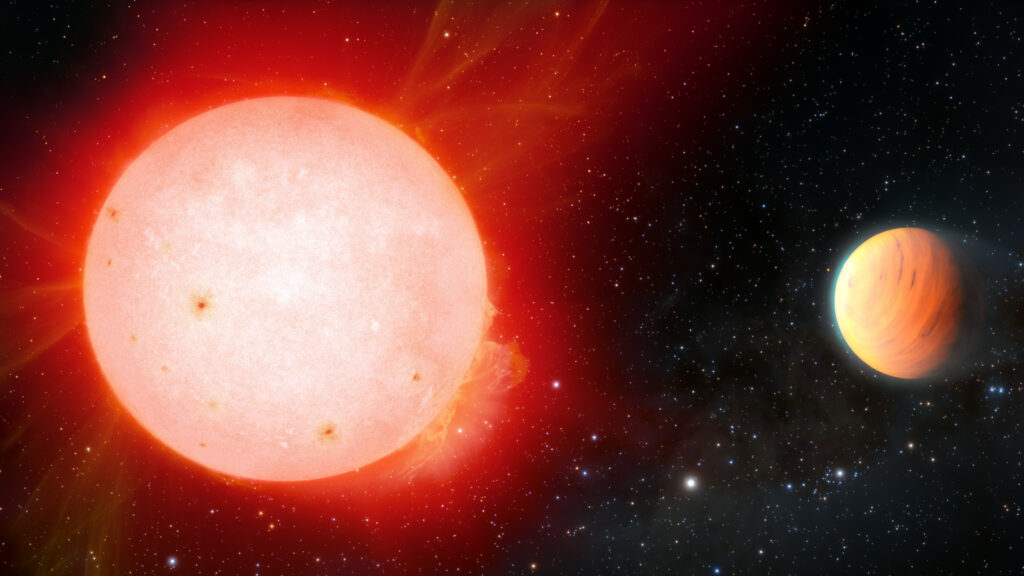American astronomers have announced the discovery of a previously unknown gas giant orbiting the star TOI-3757. The find is interesting because the newly found exoplanet has an extremely low density, comparable to the density of marshmallows.

TOI-3757 is located approximately 580 light-years from Earth in the constellation Auriga. It is a cold red dwarf. During the observations, the TESS telescope detected periodic changes in the brightness of the star. They correspond to the transits of an exoplanet with a diameter of 150 thousand km, which is comparable to the diameter of Jupiter. It makes one orbit the parent star in 3.5 days.
The discovery of an exoplanet at TOI-3757 has become quite significant news for astronomers. The fact is that such bodies do not fit well into modern theories of planet formation, suggesting that massive gas giants should not form around low-mass red dwarfs.
However, when the researchers determined the mass of the exoplanet (with the help of the 3.5-meter WIYN telescope installed at the Kitt Peak National Observatory), they were in for another surprise. It turned out that the average density of the exoplanet is only 0.27 g/cm3, which is comparable to the density of marshmallows.
According to astronomers, the ultra-low density of the exoplanet can be explained by two main factors. Firstly, the TOI-3757 star is characterized by a low content of heavy elements. This could affect the composition of the exoplanet, in particular, its core. Secondly, its orbit could also play a role, which, according to preliminary data, has a noticeable eccentricity. During periodic approaches to the star, the atmosphere of the exoplanet experiences heating and can inflate, which also affects its density.
You can also read about the recent discovery of an ultra-hot Jupiter near a dying star.
According to https://noirlab.edu
Follow us on Twitter to get the most interesting space news in time
https://twitter.com/ust_magazine

